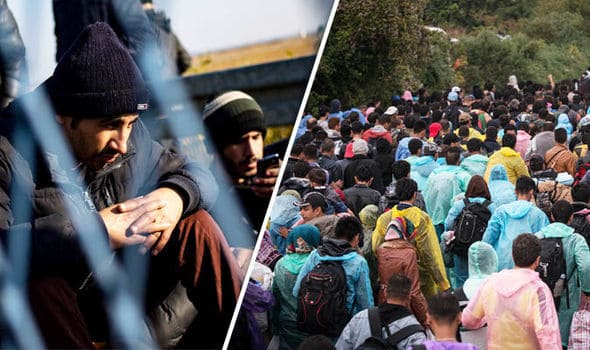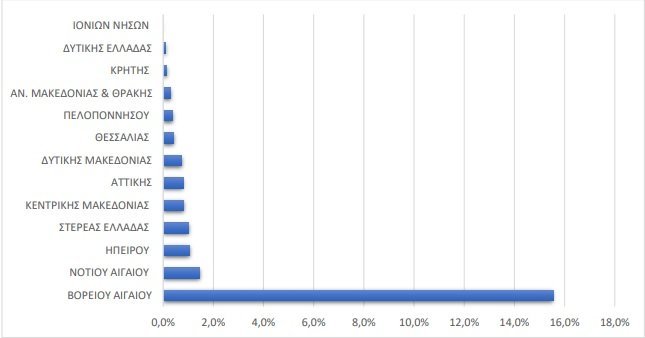
15.5% of today's population in the North Aegean islands are illegal immigrants compared to 1.4% in the South Aegean. With the exception of these two regions, whose islands are the first reception points, the distribution of illegal immigrants in the rest of Greece follows the government's goal of not exceeding 1% of the total population of the region.
However, according to updated data published by the Ministry of Immigration and Asylum, there are large discrepancies between the regions. Some regions being marginally in the target of 1%, such as Epirus, Central Greece, Central Macedonia and Attica, while in Crete and Western Greece, the ratio is only 0.1%.
At the bottom of the table is the Ionian Islands Region, where not a single illegal immigrant resides out of a total of 101,210 in the whole country.

According to the data, the regions of the North Aegean and Attica host almost the same number of asylum seekers (30,959 and 30,628 respectively). However, the proportion with the local population is 15.5% in the North Aegean and only 0.8% in Attica. In third place is Central Macedonia, with 15,371 refugees and migrants and a higher proportion than Attica (1%).
 According to the May bulletin of the Ministry of Immigration and Asylum, the number of people living on the islands decreased by 6.07% last month compared to April. The total decrease from the beginning of the year was 14.17%, i.e. a decrease of 5,937 people.
According to the May bulletin of the Ministry of Immigration and Asylum, the number of people living on the islands decreased by 6.07% last month compared to April. The total decrease from the beginning of the year was 14.17%, i.e. a decrease of 5,937 people.
The largest percentage decrease was recorded in the Dodecanese (32% in Leros and 31.7% in Kos) and is followed by Chios with 16.4%, Samos with 15.7 and lastly Lesvos (which hosts the largest number of asylum seekers) with a reduction of 7.2%.

In May, 227 refugees and migrants arrived in Lesvos. All other islands have registered zero flows since March.

Turkey has been weaponising illegal immigrants as a method to pressurise Greece, with the European country receiving little help from the European Union.
